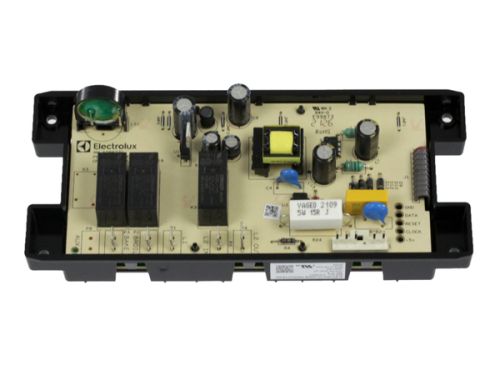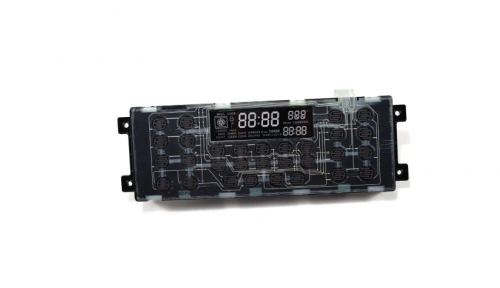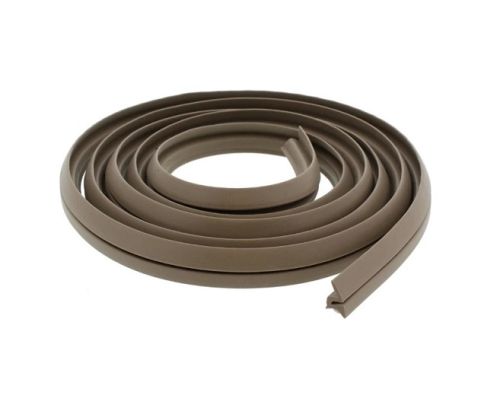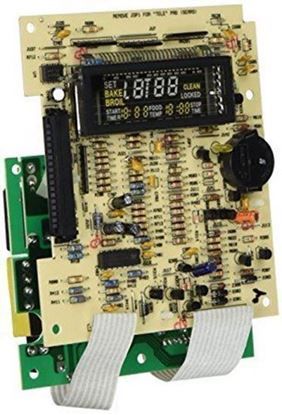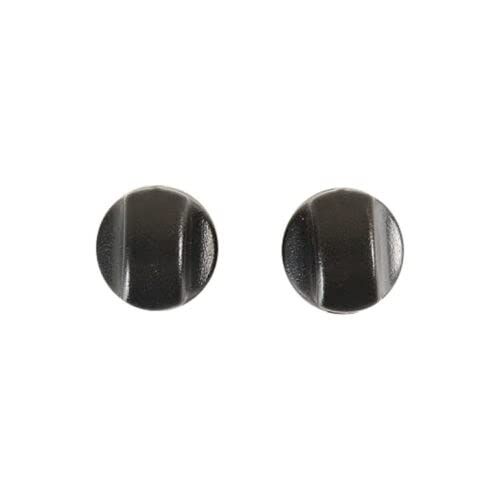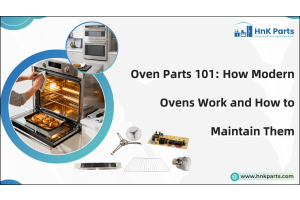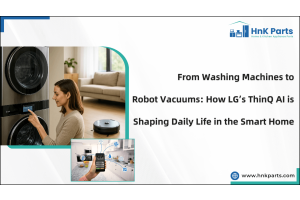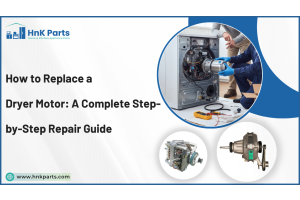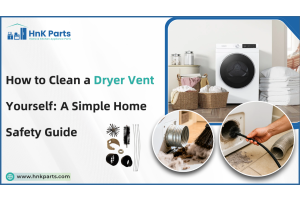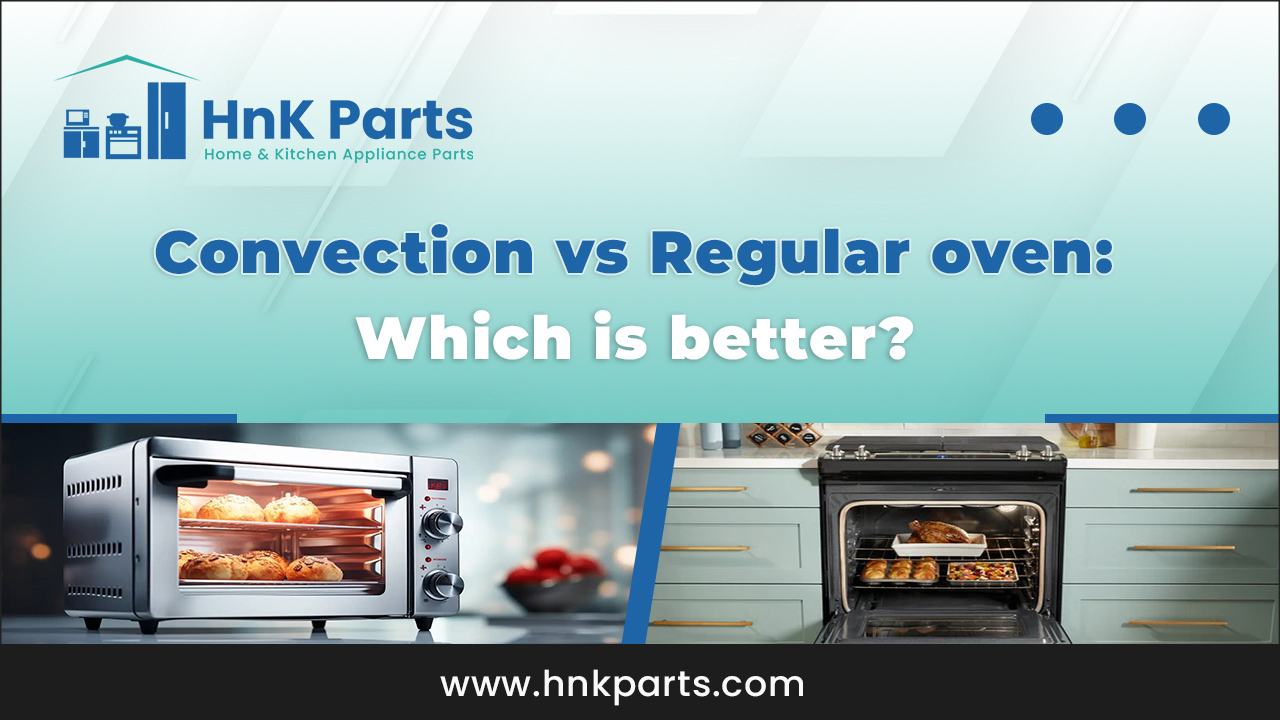
Convection vs Regular oven: Which is better?
Kitchen appliances play a vital role in modern cooking by providing convenience, efficiency, and versatility. They have revolutionized the process of cooking food, making the process faster, easier, and more enjoyable. Coming to the oven, it is a fundamental and indispensable kitchen appliance with significant importance. Oven works by heating the air inside to a set temperature, which cooks the food placed inside it. Ovens are versatile and can be used for baking cakes, cookies, and bread, as well as roasting meats and vegetables. They provide even cooking, ensuring that food is cooked uniformly. Ovens are easy to use and save time, allowing you to cook multiple dishes at once. They are an essential tool in the kitchen for preparing a variety of delicious meals. There are two main types of ovens: Convection oven and conventional oven.
Here in this article we will see about both the types of ovens in detail and the differences between them to choose the right one.
What Is a Convection Oven?
Convection oven is one type of oven that utilizes a fan and exhaust system to circulate the hot air evenly in the entire cavity of the oven to heat the food. This technology helps to cook food faster and more evenly than conventional ovens. This circulating hot air creates a more consistent temperature throughout the oven, reducing hot spots and cold spots.
Convection ovens have several benefits that include faster cooking, even cooking, crispy and golden textures, and energy efficiency. Its versatility and efficiency make it a popular choice for home cooks and professional chefs alike.
How Does a Convection Oven Work?
A convection oven is a type of oven that uses the principles of convection to cook food. Unlike conventional ovens that rely on radiant heat from the oven walls to cook food, a convection oven uses a fan and exhaust system to circulate hot air around the food.
Here's how a convection oven works:
Fan and Exhaust System: The key component of a convection oven is the fan, which is usually located on the back wall of the oven. When the oven is turned on, the fan starts to circulate the hot air throughout the oven cavity. This ensures that the hot air is evenly distributed around the food, eliminating hot spots and cold spots.
Heating Element: Like conventional ovens, convection ovens have a heating element (or multiple heating elements) that generate the heat needed for cooking. The heating element can be electric or gas-powered, depending on the type of convection oven.
Even Heating: As the heating element warms up, it transfers heat to the air inside the oven. The fan then pushes the heated air around the food, creating a constant flow of hot air over and around the items being cooked. This even distribution of heat ensures that the food is cooked uniformly on all sides.
Faster Cooking: Because the hot air is constantly moving around the food, the cooking process is accelerated in a convection oven compared to a conventional oven. As a result, you can typically cook food at a lower temperature or for a shorter amount of time, saving energy and reducing overall cooking time.
Browning and Crisping: The continuous circulation of hot air also promotes better browning and crisping of the food's exterior. This is especially desirable when roasting meats, baking cookies, or preparing other dishes that benefit from a golden and crispy texture.
Adjustments to Cooking: When using a convection oven, you may need to make adjustments to recipes intended for conventional ovens. The cooking time and temperature may need to be reduced, as the convection process cooks food faster. Many convection ovens have settings to toggle between convection mode and regular baking mode, allowing you to choose the appropriate method for your recipe.
It's important to note that not all ovens with fans are convection ovens. Some ovens have fans that only assist with ventilation and temperature distribution but do not actively circulate air for convection cooking. True convection ovens have a dedicated fan and exhaust system for convection cooking.
What Is a Conventional Oven?
It is the traditional type of oven found in most households and commercial kitchens. It uses a straightforward heating method to cook food, relying on radiant heat to transfer warmth to the food inside the oven cavity. These ovens are also commonly known as "standard ovens" or "traditional ovens." Conventional ovens contain one or more heating elements to radiate heat into the oven cavity and cook the food. They have been a standard kitchen appliance for many years, convection ovens have become increasingly popular due to their more efficient and even cooking capabilities.
How to Use Conventional Oven?
Using a conventional oven is a straightforward process, but it's essential to follow some basic steps to ensure safe and effective cooking. Here's a step-by-step guide on how to use a conventional oven:
Preheat the Oven:
Before placing your food inside the oven, it's crucial to preheat it to the desired cooking temperature. This ensures that the oven reaches the correct temperature for even and efficient cooking. To preheat the oven, follow these steps:
- Turn on the oven by selecting the baking or cooking mode.
- Use the control panel or knobs to set the desired cooking temperature. Most ovens have both Fahrenheit and Celsius temperature options.
- Wait for the oven to reach the set temperature. Some ovens have a preheat indicator that turns off or changes color when it's ready.
Prepare the Food:
While the oven is preheating, prepare the food you wish to cook. Place the food on an appropriate baking tray or in an oven-safe dish. If you're baking or roasting, you may want to line the baking tray with parchment paper or use a light coating of cooking oil or non-stick spray to prevent sticking.
Place the Food in the Oven:
Once the oven has preheated to the desired temperature, carefully open the oven door and place the food inside. Use oven mitts or a kitchen towel to protect your hands from the heat. Position the food in the center of the oven to ensure even cooking.
Set the Timer:
Using the oven's control panel, set the cooking time required for your recipe. Many ovens have a built-in timer, while others may require you to use a separate kitchen timer. If you're unsure about the cooking time, refer to your recipe or a cooking guide for general guidelines.
Monitor the Cooking Process:
While the food is cooking, keep an eye on it through the oven window or by briefly opening the oven door. Try to avoid opening the door frequently, as this can cause heat loss and increase cooking time.
Check for Doneness:
When the timer goes off or when you believe the food is close to being done, use a meat thermometer, if applicable, or visually inspect the food to check for doneness. Different foods have different recommended internal temperatures or visual cues to determine if they are fully cooked.
Remove the Food:
When the food is fully cooked, turn off the oven and use oven mitts or a kitchen towel to carefully remove the food from the oven. Place the hot dish or baking tray on a heat-resistant surface, such as a trivet or a cooling rack.
Turn Off the Oven:
After removing the food, remember to turn off the oven to save energy and prevent accidents.
Allow the Food to Rest (if applicable):
For certain dishes, especially meats, it's essential to let the food rest for a few minutes before serving. This allows the juices to redistribute, resulting in juicier and more flavorful results.
Using a conventional oven is a valuable skill that opens up a wide range of culinary possibilities. With practice and a bit of experimentation, you can create delicious meals, bake delightful treats, and enjoy the satisfaction of home-cooked goodness.
Read about How to use an Oven.
Convection oven vs regular oven cook times
In a convection oven, cook times are typically shorter than in a regular oven. The circulating hot air in a convection oven allows for more even heat distribution, which can result in faster and more uniform cooking. As a general rule of thumb, when using a convection oven, you may need to reduce the cooking time by about 25% compared to a regular oven. However, it's essential to monitor the food closely, especially when trying a new recipe or making adjustments, as convection ovens can cook food more quickly and may require lower temperatures.
Difference Between convection oven vs traditional oven
The main difference between a conventional oven and a convection oven lies in the way they distribute heat during the cooking process. Each type of oven has distinct characteristics that can affect cooking times, results, and overall efficiency.
|
Type of difference |
Conventional Oven |
Convection Oven |
|
Heating method |
A conventional oven uses heating elements to generate heat. The heated air naturally rises and falls within the oven, cooking the food through radiant heat. |
A convection oven incorporates a fan and exhaust system to circulate hot air throughout the oven cavity. This circulating hot air surrounds the food, promoting even and efficient cooking through convection, which transfers heat more effectively than radiant heat. |
|
Cooking times |
Cooking times in a conventional oven tend to be slightly longer because the heat is primarily transferred through radiant heat. It may take longer to cook certain dishes compared to a convection oven. |
Convection ovens cook food faster due to the constant circulation of hot air around the food. This can result in reduced cooking times, making them more energy-efficient. |
|
Evenness of Cooking |
Conventional ovens can have some temperature variations inside the oven cavity, leading to potential hot spots and cooler areas. This might result in uneven cooking, requiring users to rotate dishes during cooking for more consistent results. |
The even distribution of hot air in a convection oven results in more uniform cooking. The circulating air ensures that the food receives heat from all sides simultaneously, minimizing the risk of uneven cooking. |
|
Energy Efficiency |
Conventional ovens can be less energy-efficient because they typically require longer cooking times and may have more temperature fluctuations. |
Convection ovens are generally more energy-efficient due to their faster cooking times and ability to cook at lower temperatures. |
Choosing the Right Oven for Your Needs
Choosing the right oven for your needs, whether a convection or conventional oven, is an important decision that can significantly impact your cooking experience and the quality of your meals.
Here we have mentioned some factors to consider when choosing the right oven for your kitchen:
Based on cooking style and frequency:
Think about your cooking habits and the types of dishes you prepare regularly. If you bake, roast, and broil often, a convection oven might be a better fit due to its even cooking and efficient baking capabilities. Convection ovens are excellent for cooking multiple items at once, making them ideal for families or individuals who entertain frequently. On the other hand, if you primarily use your oven for simple baking and cooking tasks, a conventional oven may suffice.
Based on Cooking Performance:
Convection ovens offer more consistent and even cooking compared to conventional ovens. They provide better browning and crisping, making them ideal for achieving that golden crust on roasted meats, crispy cookies, and perfectly risen baked goods. If achieving professional-level cooking results is essential to you, a convection oven is a worthy investment.
Based on Cooking Times and Energy Efficiency:
Convection ovens generally cook faster than conventional ovens, which can save you time and energy. They operate at lower temperatures due to the efficient heat distribution, meaning you may reduce your overall energy consumption over time. If energy efficiency is a priority for you, a convection oven might be a more eco-friendly option.
Space and Budget:
Consider the size of your kitchen and the available space for your oven. Convection ovens tend to be larger than conventional ovens because of the fan and exhaust system. Ensure that you have enough space for the oven you choose. Additionally, convection ovens can be more expensive than conventional ovens due to their advanced technology. Assess your budget and determine how much you are willing to spend on your oven.
Know about the Parts of an Oven.
Tips for Using Convection and Conventional Ovens
Using both convection and conventional ovens effectively requires some specific tips and techniques. Here are some useful tips for getting the best results from each type of oven:
Tips for Using a Convection Oven
- Lower the Temperature: When using a convection oven, reduce the cooking temperature by about 25 degrees Fahrenheit (or 15 degrees Celsius) compared to a conventional oven recipe. The circulating hot air in a convection oven cooks food faster, so lower temperatures ensure even cooking without overcooking.
- conventional vs convection cooking times: Since convection ovens cook faster, you'll typically need to reduce the cooking time by about 25% to 30%. Keep a close eye on your food during the cooking process and use a timer to avoid overcooking.
- Use Shallow Baking Pans: Opt for shallow baking pans or sheets with low sides. This allows the hot air to circulate freely around the food, promoting even cooking and better browning.
- Avoid Overcrowding: To ensure proper airflow, avoid overcrowding the oven with too many dishes or trays. Leave enough space between items to allow the hot air to circulate effectively.
- Rotate Dishes: Even though convection ovens provide more even cooking, it's still a good idea to rotate baking trays or dishes halfway through the cooking time for consistent results.
- Check for Doneness Early: Due to the faster cooking times, start checking your food a few minutes before the recipe suggests it should be done. This helps prevent overcooking and allows you to adjust as needed.
Tips for Using a Conventional Oven
- Preheat the Oven: Always preheat your conventional oven before cooking. This ensures the oven reaches the correct temperature for even cooking and consistent results.
- Position the Racks: When using a conventional oven, position the oven rack in the center to promote even cooking. Adjust the rack level based on the size and type of food you are cooking.
- Rotate Dishes: To counter potential hot spots and ensure even cooking, rotate baking pans or dishes once or twice during the cooking process.
- Use Oven Thermometers: Since conventional ovens can have temperature variations, consider using an oven thermometer to check the actual temperature inside the oven. This ensures accuracy when following recipes.
- Avoid Opening the Oven Door: Limit opening the oven door during cooking, as this causes heat loss and can increase cooking time. Instead, use the oven light and oven window to monitor the progress.
- Check for Doneness: Depending on the recipe, use visual cues or a meat thermometer to determine when the food is fully cooked. This helps prevent undercooking or overcooking.
- Preheating for Baking: When baking delicate items like pastries and cakes, ensure the oven is fully preheated before placing the items inside. This helps achieve the desired rise and texture in your baked goods.
By following these tips, you can make the most of your convection or conventional oven and create delicious meals and baked treats with confidence. Understanding the unique features and techniques for each type of oven will improve your cooking skills and ensure successful outcomes in the kitchen.
The major difference between conventional and convection ovens is the heating process inside the cavity. Based on your cooking needs, ensure that you are choosing the right oven. Both the ovens are the best in terms of performance and are available in various sizes and features.
FAQ’s
what is the difference between bake and convection bake?
The primary difference between bake and convection bake is the way heat is circulated within the oven. In a traditional bake setting, the heat comes from the bottom of the oven, cooking food through a process of conduction. Convection bake, on the other hand, utilizes a fan to circulate hot air throughout the oven, resulting in more even and efficient cooking. This fan-forced circulation speeds up the cooking process and can lead to more consistent results, making it particularly useful for baking and roasting.
Can you use a convection oven like a regular oven?
Yes, you can use a convection oven like a regular oven. Convection ovens typically have a "convection off" mode, which allows them to function like a standard conventional oven. In this mode, the fan is turned off, and the oven operates without the forced air circulation. So, you have the flexibility to choose between convection and conventional modes based on your cooking needs and preferences.
Are convection ovens same as air fryer?
No, convection ovens and air fryers are not the same, but they share some similarities in their cooking methods.
Convection ovens use a fan to circulate hot air throughout the oven cavity, creating a consistent and even cooking environment. This results in faster and more even cooking compared to traditional ovens.
Air fryers, on the other hand, are a specific type of convection oven designed for efficient and healthier frying. They use a similar principle of circulating hot air with a fan, but they are smaller and more focused on high-temperature cooking, mainly used for frying foods with minimal or no oil.
Can you cook french fries in a convection oven?
Yes, you can cook french fries in a convection oven. In fact, convection ovens can be a great option for cooking french fries as they help to achieve a crispy and evenly cooked result. The circulating hot air in the convection oven helps to cook the fries more efficiently and can produce a texture similar to deep-frying, but with less oil.
What takes more electricity air fryer or convection oven?
In general, air fryers tend to consume less electricity compared to convection ovens. Air fryers are smaller and more focused appliances designed for efficient and quick cooking, especially for smaller portions. Their compact size and specialized cooking function help reduce energy consumption. On the other hand, convection ovens are larger and more versatile, capable of handling larger quantities of food, but this can result in slightly higher electricity usage compared to air fryers. The exact energy consumption may also depend on the specific models and cooking times used for each appliance.
What temperature do you air fry in a convection oven?
In a convection oven, the temperature for air frying typically ranges between 350°F (175°C) and 400°F (200°C). However, it's essential to follow the specific recipe instructions or the recommendations provided by your convection oven's manufacturer for the best results. The cooking time may also vary based on the type and quantity of food you are air frying. Always preheat your convection oven before air frying to ensure even cooking and crispy results.


